A cheaper way to add up to 26 per cent to property values
Studies have found one key area can add up to 26 per cent to property values if renovated right – and it’s not the kitchen or bathroom. Here’s a simple plan to make it a reality.
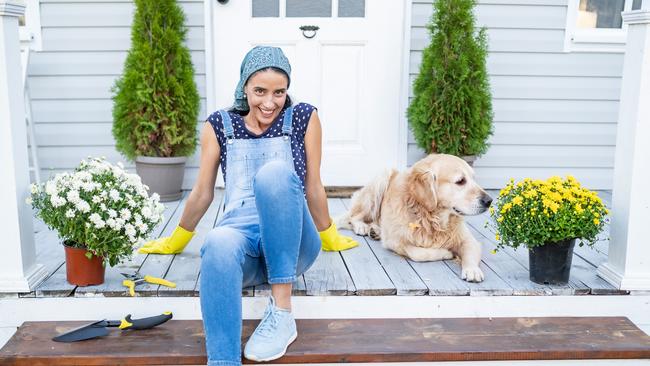
Home
Don't miss out on the headlines from Home. Followed categories will be added to My News.
If you are selling your property this year especially as interest rates continue to rise, you need to pull out all the stops to secure the sale.
The best way to woo in buyers is with an immaculate landscaped garden and frontage.
According to the Husqvarna Group’s Global Garden Report, a well kept garden can impact and raise property values between 10 per cent and 26 per cent, while a neglected one can have the opposite effect and detract 15 per cent from its value.
So your garden plays an important role in getting you the best outcome. Other studies have shown that the rate of return from investing in your garden, particularly out the front is far greater than that of investing in a new bathroom or kitchen, which is what many people do to make their property more saleable.

Favourable first impressions of a property are critical and these start when people arrive and enter the front garden. Many may have already fallen in love with a property by the time they reach to the front door. The backyard is also important but its purpose tends to be more focused on space, liveability and usability.
Elements that contribute most to the value of a property are a well-maintained lawn, an inviting social area, designed stone or paved paths and entrance ways, and attractive trees and shrubs.
Here are 10 simple steps to help you prepare your garden for sale.
Step 1: Assess
Take a critical look at your garden through the eyes of a stranger. Make a checklist of everything you see from where a car parks on the street to when a visitor gets to the front door, and then move to the backyard and do the same thing. Work out what needs tidying and if anything should be added or removed.
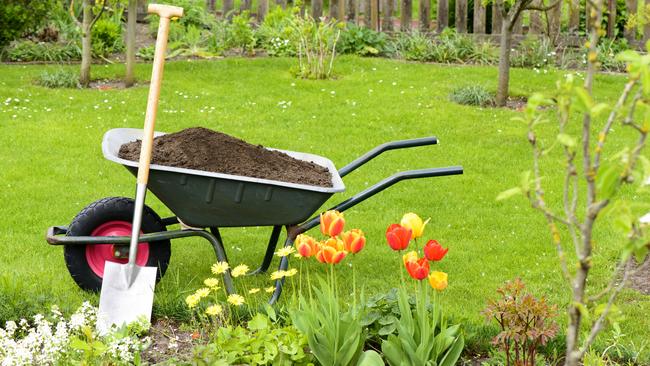
Step 2: Tidy Up
This may seem obvious, but it is so important to remove obvious eyesores such as rubbish, dead plants and weeds. Other important tasks are mow lawns and rake or blower vacuum driveways and paths. It is a great idea to feed the whole garden and any lawns with a slow-release, organic-based fertiliser one to two months before the garden is due to open, so that it has time to break down and the nutrients become available to the plants, to nourish them and have them look in peak condition.
Step 3: Plant
Bare garden beds can be improved with smart planting, however always get advice from the local nursery and garden centre. Don’t just go for what is showy and in flower at the moment – look to include plants that are only just coming into flower and will bloom for months to come, or plants that grow quickly to fill empty spaces.
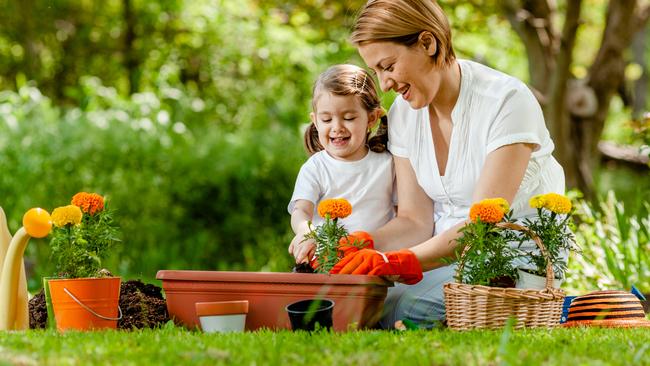
Step 4: Mulch
On a practical level mulch is important to help our plants stay happy and healthy, and reduce weeds, however on an aesthetic level, it is an easy thing to do to smarten up a garden, so apply a generous layer of mulch to add a finished touch to garden beds.
Step 5: Jazz Up
Work out ways to smarten up high impact areas like entrances and entertaining areas. This could be by adding large pots either side of entrances planted up with interesting combinations, potting ornamental bowls up with instant potted colour, using seasonal pots such as a cyclamen, bulbs or hydrangeas in an attractive cover pot, or having planted table centres on all outdoor tables. Plant combinations for big pots could include a large shrub with a ground cover, strappy leaf plant for contrast and several pots of colour. We are overplanting these pots for effect and not expecting these plants will work well in here for the long-term.
MORE: Game plan to tackle a midlife garden meltdown
‘How to keep the passion burning’: Selling Houses Australia’s Dennis Scott
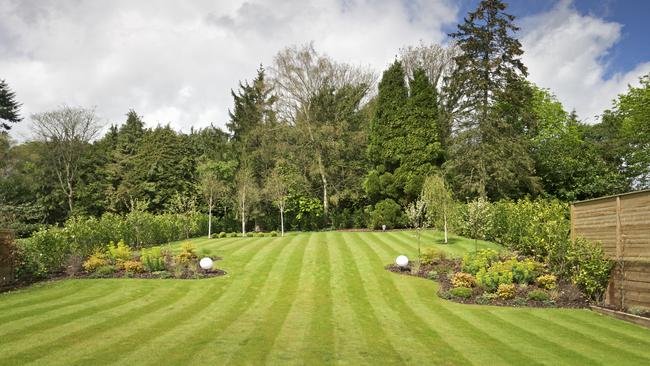
Step 6: Clear the clutter
Sometimes having an outside opinion from friends or family can help with this. It might include removing daggy plants as a space without a plant can often look better than a struggling plant that really wants to be put out of its misery. It might be that you need to clear excess furniture from entertaining areas to make them look bigger, remove clutter from carports and verandas, and even clear excess contents from garden sheds so they look roomier.
Step 7: Trim
This task is best done a month or more before your property goes on the market. Lightly trim shrubs and then feed and water them to encourage a new flush of fresh growth. Hedges should also be neatly trimmed ahead of time.
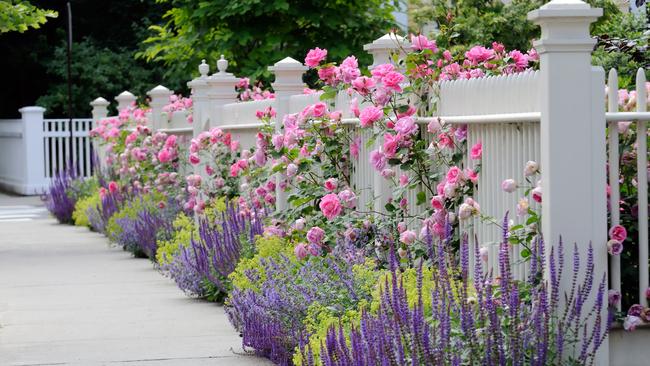
Step 8: Keep your roses looking great
If you have roses in your garden, make sure they are at their peak. Roses can look great from October to May, even if they are not flowering, but to keep them looking good you should dead head them weekly, water them deeply and use a specific rose fertiliser regularly. Aim to keep their foliage disease free by spraying proactively to help prevent fungal problems like black spot and powdery mildew, which is particularly bad as a result of humid weather.
Step 9: Add a vegie patch
Since Covid, there has been a huge interest in and engagement with productive gardening, as well as a sincere concern about food security. As a result, people want a productive space, even if only small and limited to containers for growing herbs. Save them the trouble of creating their own and set one up for them, even if it is just a raised bed or a few wine barrels. Make sure they are planted out with crops that appeal and look ready to harvest, so that the visitors can harvest a strawberry, or tomato or two.

Step 10: Take the garden inside
The trend for indoor plants has continued to grow, so show potential buyers what your home looks like with plants in it and also that it is a great home to grow indoor plants in. By investing in large, healthy, good quality indoor plants in attractive pots and placing them around your home, they should survive the open inspections. The great thing about this step is you will get to take these plants with you to your new home, so be sure to get ones you like.
The Outcome:
The aim of these steps is to capture the desire of potential buyers as they enter the property so that they have already fallen in love with it before they reach the front door. Aim also to stimulate all of their senses from sight with an attractive, lush, colourful garden, sound with bird song, touch with the feel of foliage, sensory plants and lawn, smell with the perfume of scented plants and herbs, and taste with a sneakily picked homegrown tomato.

Plant of the Week – Cane begonias
Sometimes referred to as ‘Angels Wings’ begonias due to their leaf shape, these hardy begonias produce long-lasting, pendulous sprays of flowers in assorted colours ranging from white through pink, salmon, orange, red and rose. Known for their sturdy, cane-like stems which have swollen nodes similar to bamboo, these plants range in size from 30cm up to 2m high depending on the variety and there are many leaf colours and markings. Most flower over a long period and they can be grown as in the ground, or in pots on patios, verandas and as indoor plants. In hot climates they are best in a shaded or semi-shaded gardens and as an indoor plant they grow best if the situation is very light.
Despite their lush tropical appearance, specimens in the ground survive on minimal watering once established in reasonable soil. They require very little maintenance although they do like regular feeding, and they also need good drainage so take care not to over-water them, especially in pots, never letting the pot stand in a saucer of water. They are frost tender so in cool-climate areas either place them under cover or grow them inside.
Originally published as A cheaper way to add up to 26 per cent to property values


